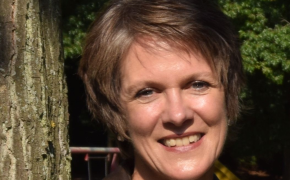The installation of a public natural gas vehicles (NGV) station is a precondition for the shift to a fleet of natural gas vehicles in the port area.
The Port of Nantes Saint-Nazaire is committed in the NG for 40 years thanks to Elengy terminal of Montoir de Bretagne, one of largest in Europe.
The Port commitment in alternative fuels envisaged the lack of NGV stations in the downriver part of the Port, where 90 % of the traffic is handled. The closest existing NGV stations were upriver in Nantes (50 km) and in northward, in Vannes (100 km) in Brittany.
In 2018 too, ADEME, the French Agency of the Ecological Transition, launched "NGV / BioNGV" project in order to support the purchase of NG vehicles. SYDELA (Syndicat départemental d'énergie de la Loire Atlantique), applied susscessfully. It wants to develop a network of NGV stations on the territory of Loire-Atlantique and add a NG station in Saint-Nazaire area.
In the frame of the ADEME project the Port Authority of Nantes Saint-Nazaire decided to purchase three NG vehicles for its own needs. Thanks to the commitment of a total of 18 companies, a sufficient demand was identified for the NGV station.
Resources needed
On the field :
An area rented by the Port Authority
Connection to the NG National Grid
For the project phase :
Commissioning the feasibility study
3 meetings with stakeholders
Commissioning the station management
The public 3 tracks NG station is due to open early 2021, for a 1 M€ costs
Evidence of success
The practice illustrates the need for public/private cooperation in the energy transition. The change of fuel of trucks requires an efficient network of NGV stations on the supply side and a sufficient number of trucks on the demand side. The practice managed to deal both on the supply and on the demand. On the supply side, the main asset was the location of the station. On the demand side, the opportunity was to link the ADEME project in order to support local truck and bus operators.
Potential for learning or transfer
This practice in the field of alternative fuels as a driver for reducing CO2 emissions provides useful learning to other regions dealing with port activities. First, the process is on the long term when the market isn't enough for implementing a public station. Public entities have to manage to aggregate different demands, from the public side (as garbage or bus companies) and from the private side (truck companies, etc..). Secondly, funding has to be taken into account, especially by helping the vehicles owners to change fuel. Thirdly, a station has to be part in a network, based on a public scheme, in order to ensure a sustainable reliability.
Tags: Climate change, Cooperation, Low-carbon, Mobility, Ports, Transport








